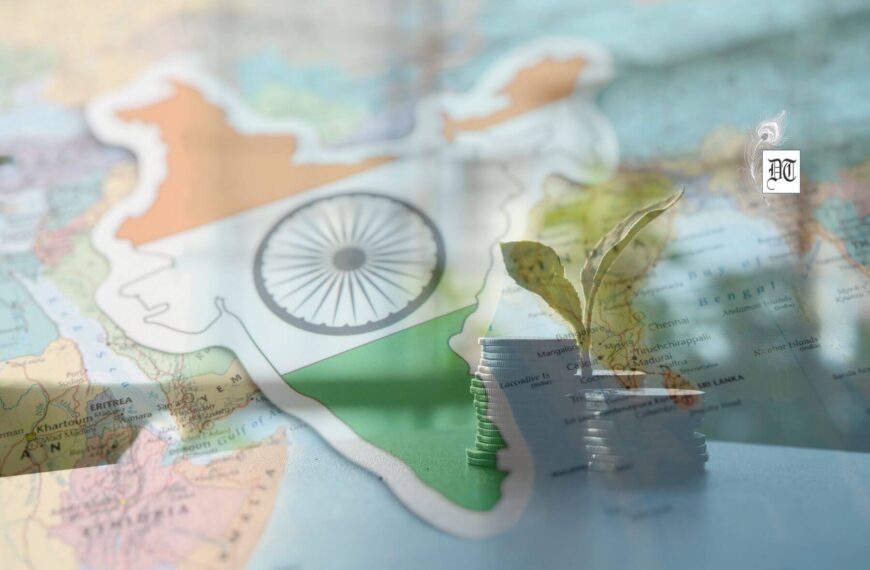It has taken 70 years as an independent nation to reach where we are today, from an underfed nation of 40% people to an underfed nation of 20% people. We are moving fast, but the population is also moving. In that way, we have to keep on running, until the development is able to run faster than population growth, says Tarun, in his weekly column, exclusively in Different Truths.
Ever since I was a kid, I have heard two refrains: Population is our biggest problem, and India’s biggest resource is its human assets. This has always confounded me. Is population a liability, or an asset? It has taken 70 years as an independent nation to reach where we are today, from an underfed nation of 40% people to an underfed nation of 20% people. We are moving fast, but the population is also moving. In that way, we have to keep on running, until the development is able to run faster than population growth.
India is still not a developed country after 70 years of independence. There are so many statistics that tell about this. If the population is an asset, then why are we not amongst the top three countries in the world? Either population is not an asset, or the system is wrong somewhere. Is it not true? I have tried to investigate.
 Let’s proceed with the assumption that population is an asset. Then, what’s stopping us from reaching the desired goal? I tried to look at history. India has had a rich history of trade and wealth. India was the trading centre of the world, so much so that many voyagers like Columbus and Vasco da Gama tried to find alternative routes to India. India not only manufactured exported products like cut precious stones, including diamonds, spices, iron, copper, handicrafts etc. but also was a trading centre for many foreign goods like Chinese silk, cut glasses, and many other things. Indian muslin was one of the finest clothes ever produced.
Let’s proceed with the assumption that population is an asset. Then, what’s stopping us from reaching the desired goal? I tried to look at history. India has had a rich history of trade and wealth. India was the trading centre of the world, so much so that many voyagers like Columbus and Vasco da Gama tried to find alternative routes to India. India not only manufactured exported products like cut precious stones, including diamonds, spices, iron, copper, handicrafts etc. but also was a trading centre for many foreign goods like Chinese silk, cut glasses, and many other things. Indian muslin was one of the finest clothes ever produced.
Yet, our rulers continuously fought each other. India was a union of various small princely states. There was no central authority for most of the times. This meant that India was pulled in so many different directions, despite there being a common cultural affinity all through the length and breadth of the geographical mass south of Himalayas. This led to India becoming subjugated to the British rule and the subsequent impoverishment of the country.
What does this mean? That Indians are good when they work for themselves (good traders), but are poor society people? I tried to investigate deeper. When did the Indians work selflessly for the society? I could fish out huge stories of selfless service. Right from the examples of Lord Ram banishing his Consort at the word of a washerman, to selfless service to the society by so many enlightened Rishis, who wrote such masterpieces as Yoga Sutras, the Vedas, Puranas, Ayurveda, and so many other branches of knowledge. We had top class educational institutes like Takshashila, Nalanda, and others. We had top class ministers like Chanakya, warriors like Chandragupta Maurya, and a long list of sacrifices by umpteen nationalists. So, certainly, we have had a culture of sacrifice for the society.
So, why is India not reaching that much-cherished goal of being the golden goose of yesteryears? If 125 crore Indians worked in a single direction, can anybody stop this massive force? Sadly, as we have seen, we have not worked in a single direction in the past. As a student of physics will know, the force in a single direction results in a greater displacement of the object, than force in various directions. That means, the same 125 crore Indians are a force only if they work in a common direction. So, 125 crore Indians can be an asset or liability, depending upon the force they exert towards a common direction.
Let’s examine if we all are working towards a common goal, at least economically. Now, everybody agrees that India’s current account deficit or trade deficit needs to be done away with. India imports petroleum products, electronics, and gold as top three products, resulting in a signi ficant outgo of precious foreign exchange. Petroleum is required for a higher standard of living, but it is only of one-time use. Those advocating a lower import, would still not use public transport. So, once petrol is used up, we need to import it again. Imported electronics are again useful for higher standards, but there are substitutes available in our own country.
ficant outgo of precious foreign exchange. Petroleum is required for a higher standard of living, but it is only of one-time use. Those advocating a lower import, would still not use public transport. So, once petrol is used up, we need to import it again. Imported electronics are again useful for higher standards, but there are substitutes available in our own country.
While most would want India to progress, still they can’t do without an imported mobile phone or so many other things of everyday usage. Gold has no substitute and once imported, it remains forever in one form or another. Gold underpins a country’s economy, whether it is in government hands or private hands. Some theories suggest that India remains immune to many international financial crises like the ASEAN crisis or the subprime crisis in the USA, because of her significant gold holdings. This gold was used by Dr. Manmohan Singh to avert a financial crisis in 1991. When gold is bought, it becomes an asset of value, even though the country loses precious foreign exchange. But gold is constantly at the receiving end of government policies since the public can’t be told to ration its use of petrol or electronics.
We see that economic policy goals and actual attempts are two vastly different things. There are so many spheres, like city planning, transport, irrigation, health, education, etc. which are either planned poorly or implemented poorly, because of corruption, lack of political will, lack of adequate legal framework and umpteen other problems. Lack of strong implementation is only making India lose its vitality. Individualism results, as everybody is doing what he deems fit in his personal interest, rather than a common national polity. Hence, we get 125 crore Indias, instead of 125 crore Indians.
©Tarun Gupta
Photos from the Internet
#PopulationOfIndia #IncreaseInPopulaitonButNotProsperity #EconomyOfIndia #FinancialCrisis #GoodTraders #ImportOfPetroleum #BareFootEconomist #DifferentTruths




 By
By

 By
By
 By
By